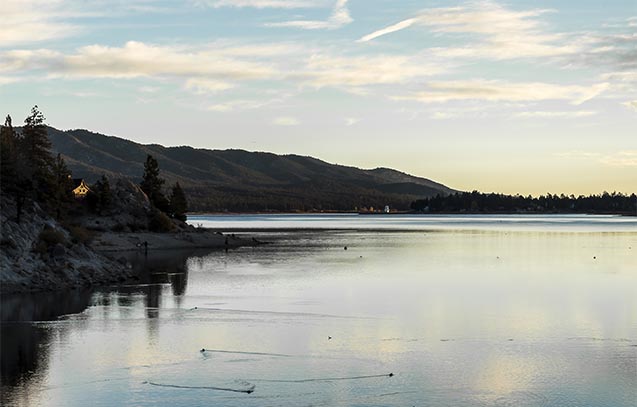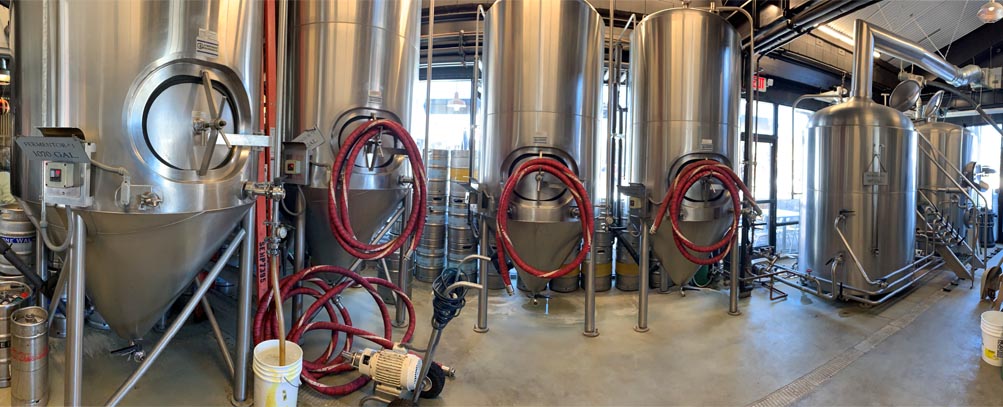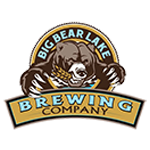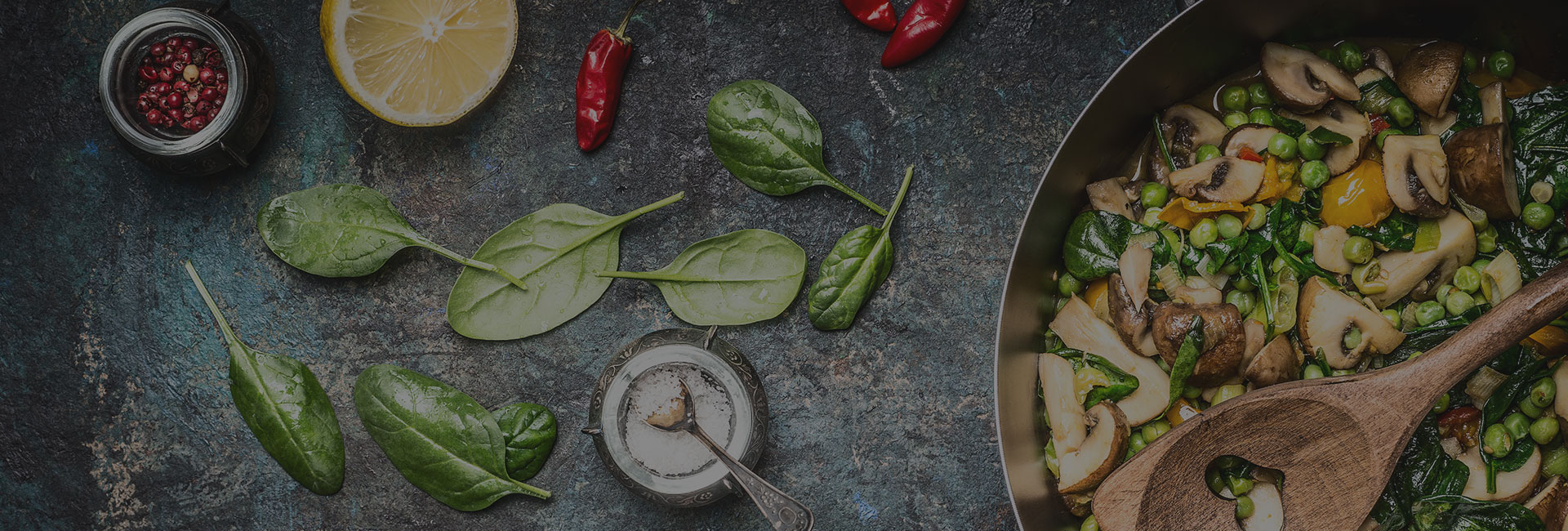Brewing Process
At Big Bear Lake Brewing Company, our brewing process combines old world traditional methods with state-of-the-art modern equipment, and utilizes only the finest raw materials obtainable. Mix all of that with our brewers’ history in the craft and conscientious attention to detail and you get beer that is not only delicious, but consistently delicious.
Water Source
The deep aquifers surrounding the Big Bear Valley, supplied by natural snow fall and rain, provide natural spring water to the town and Big Bear Lake Brewing Company with excellent naturally sourced brewing water.

Milling
Whole malted barley is dropped into our grissler before each brew where it is milled to the appropriate granular consistency. Specialty malts may be added for color and flavor, depending on the recipe. The malt mill discharges the milled malt (or malt grist) to a large hopper in preparation for mashing. The malted barley kernel is then cracked or split by the mill during the mashing process, giving the brewer access to the sugars and proteins within.
Mashing
By targeting specific temperature ranges that activate natural enzymes within the malt during the mashing phase, our brewers convert complex sugars into smaller sugars that the yeast can later use during the fermenting process.
That malt grist is sent to the mash tun with hot water. There the malt is steeped to convert sugars and begin extracting other nutrients, protein and color. Conversion takes about an hour and then the temperature is raised to completely stop enzymatic activity.

Lautering
After the mash is pumped to the lauter tun, we separate the grain from the liquid, or “wort.” The wort flows through a series of screens on the bottom of the lauter tun and then runs over to the boil kettle. All of the husk materials from the malted barley acts as a filter and begins clarifying the wort as it travels. Hot water is then sprayed over the grain bed to rinse out all the sugars from the grain, a process called sparging.
Kettle Boiling
Once all of the wort is run off from the lauter tun into the boil kettle, it is heated to a boil using steam from our energy efficient on-demand boiler system. When a boil is reached, the brewer begins to add flavorful hops, and may add several hop additions throughout the boil depending on the recipe.
Fermentation
Taking into consideration each specific beer style, the appropriate strain of brewer’s yeast is added to the wort inside conical bottom fermentation tanks. The yeast then breaks down the malt sugars to produce alcohol and CO2, which gives the beer its distinct and familiar characteristics. Significant flavor development and maturation also take place during fermentation.
Wort Clarification
After the boil, the wort is sent to our whirlpool. As the heavy, sweet wort spins it separates the insoluble proteins from the hop material. The clarified wort is then sent through our wort chiller where it exchanges heat with cold water. The cooled wort is sent to the fermentation cellar and the heated water is stored and used for the next brew.




